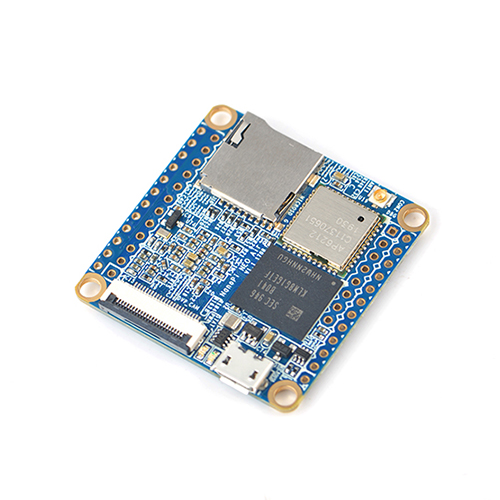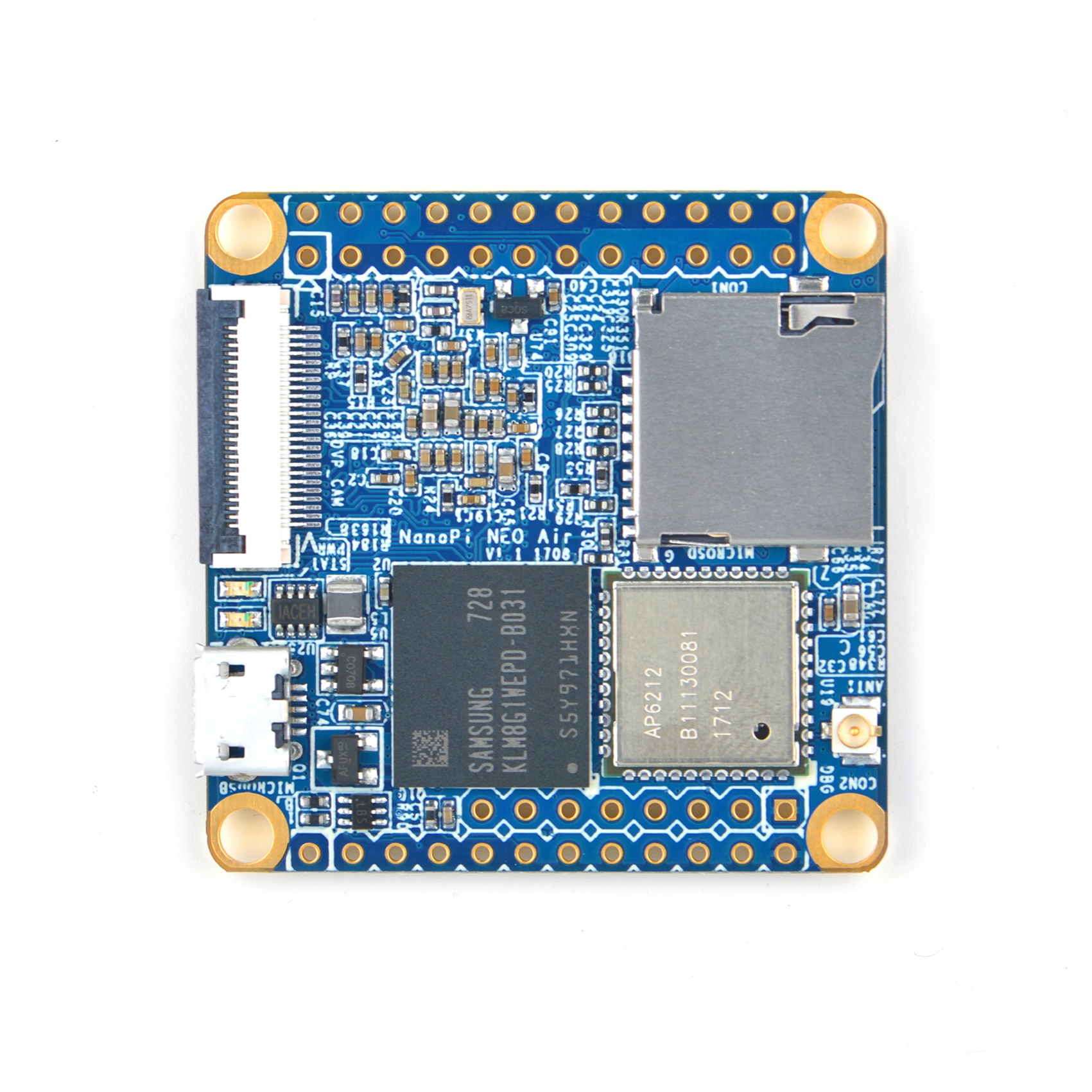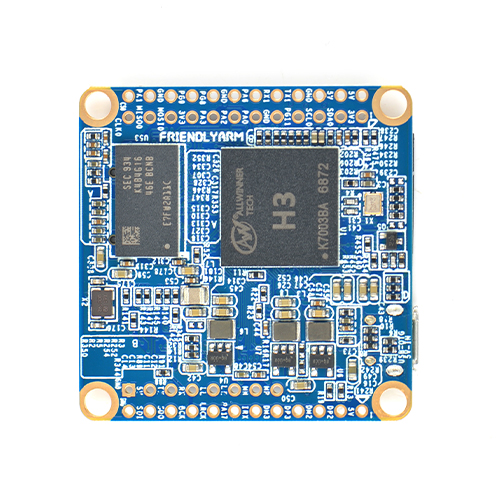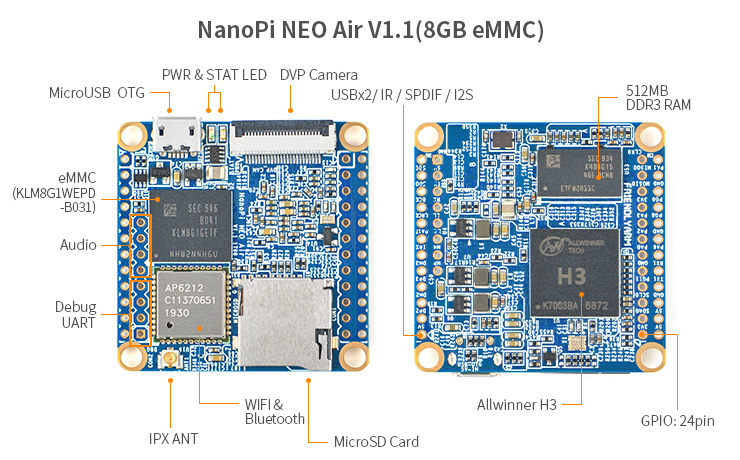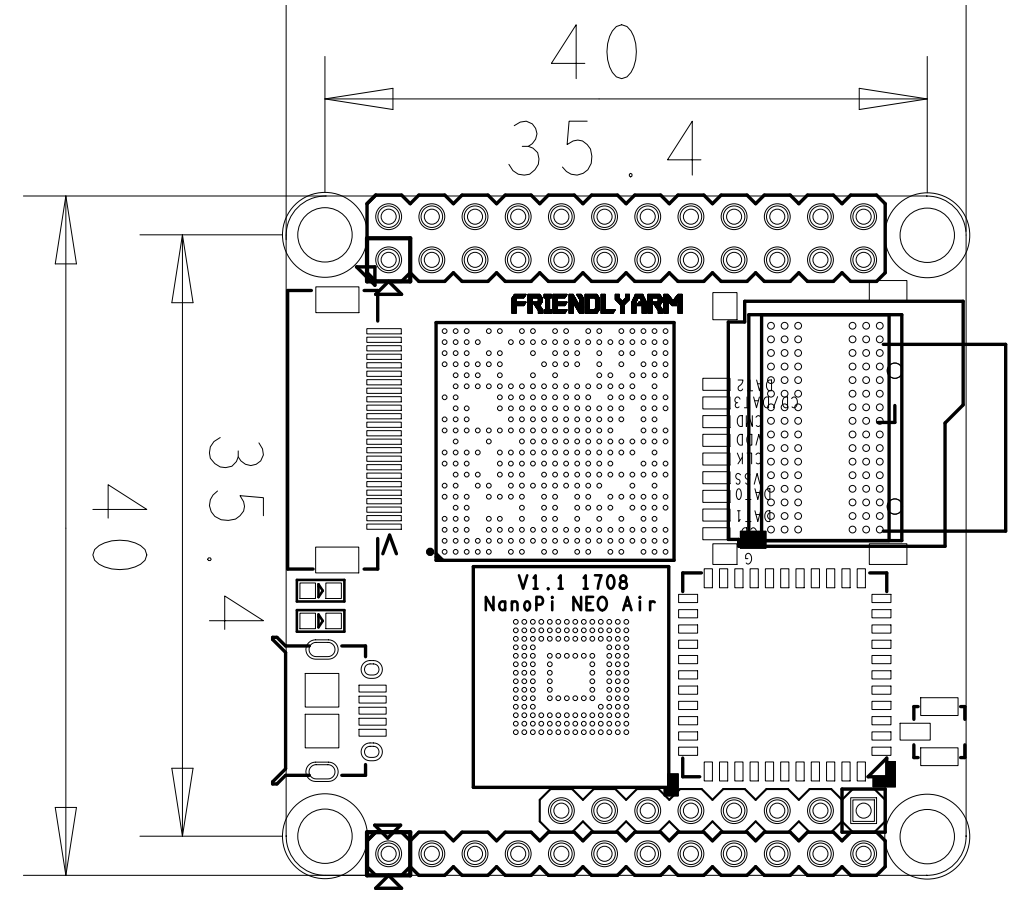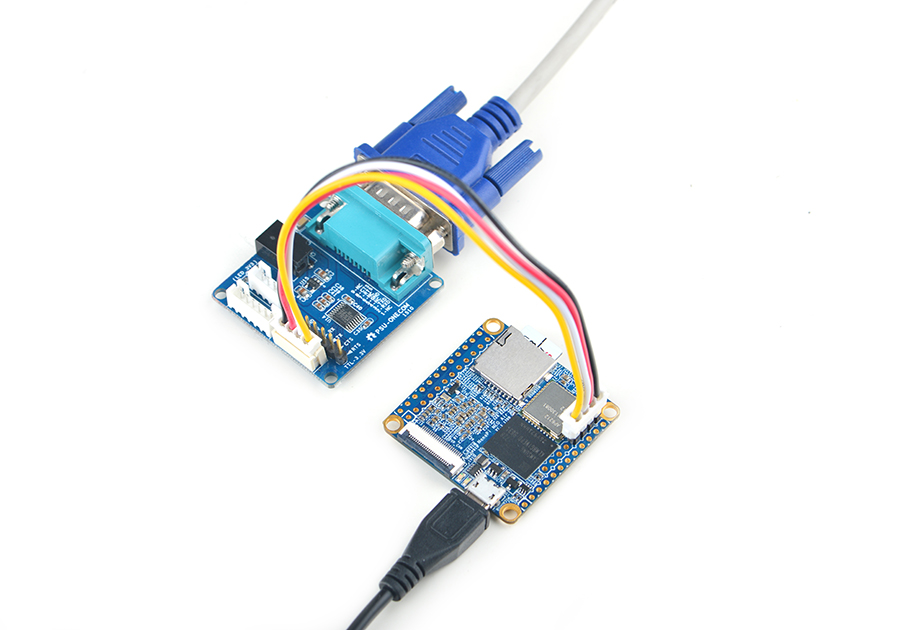Difference between revisions of "NanoPi NEO Air"
(→Preparations) |
(→Install Cross Compiler) |
||
| Line 398: | Line 398: | ||
===Install Cross Compiler=== | ===Install Cross Compiler=== | ||
| − | Visit this site [https:// | + | Visit this site [https://www.mediafire.com/folder/sr5d0qpz774cs/NanoPi-NEO_Air download link], enter the "toolchain" directory, download the cross compiler "gcc-linaro-arm.tar.xz" and copy it to the "lichee/brandy/toochain/" directory. |
===Compile lichee Source Code=== | ===Compile lichee Source Code=== | ||
Revision as of 06:31, 19 May 2017
Contents
1 Introduction
- The NanoPi NEO Air is a 40 x 40mm open source ARM board for makers.It uses an Allwinner H3 Quad Core A7 processor at 1.2GHz. Its pins are compatible with the NanoPi NEO(V 1.2) and its 24-pin header is compatible with Raspberry Pi's GPIO pin headers.
- The NanoPi NEO AIR features 512MB of 16bit wide DDR3 RAM, 8GB eMMC and one MicroSD slot. It has WiFi & Bluetooth and DVP camera interface(YUV422). The DVP camera interface can support friendlyarm's 5M-pixel camera module
- It has enhanced power circuit design and better heat dissipation.
2 Hardware Spec
- CPU: Allwinner H3, Quad-core Cortex-A7 Up to 1.2GHz
- RAM: 512MB DDR3 RAM
- Storage: 8GB eMMC
- WiFi: 802.11b/g/n
- Bluetooth: 4.0 dual mode
- DVP Camera: 0.5mm pitch 24 pin FPC seat
- MicroUSB: OTG and power input
- MicroSD Slot x 1
- Debug Serial Port: 4Pin,2.54mm pitch pin header
- GPIO1: 2.54mm spacing 24pin,It includes UART,SPI,I2C,GPIO
- GPIO2: 2.54mm spacing 12pin,It includes USBx2,IR,SPDIF,I2S
- PCB Size: 40 x 40mm
- PCB layer: 6
- Power Supply: DC 5V/2A
- Temperature measuring range: -40℃ to 80℃
- OS/Software: u-boot, UbuntuCore
- Weight: 7.5g(WITHOUT Pin-headers)
3 Diagram, Layout and Dimension
3.1 Layout
- GPIO Pin Description
Pin# Name Linux gpio Pin# Name Linux gpio 1 SYS_3.3V 2 VDD_5V 3 I2C0_SDA 4 VDD_5V 5 I2C0_SCL 6 GND 7 GPIOG11 203 8 UART1_TX/GPIOG6 198 9 GND 10 UART1_RX/GPIOG7 199 11 UART2_TX/GPIOA0 0 12 PWM1/GPIOA6 6 13 UART2_RTS/GPIOA2 2 14 GND 15 UART2_CTS/GPIOA3 3 16 UART1_RTS/GPIOG8 200 17 SYS_3.3V 18 UART1_CTS/GPIOG9 201 19 SPI0_MOSI/GPIOC0 64 20 GND 21 SPI0_MISO/GPIOC1 65 22 UART2_RX/GPIOA1 1 23 SPI0_CLK/GPIOC2 66 24 SPI0_CS/GPIOC3 67
- USB/I2S/IR Pin Description
Pin# Name Description 1 VDD_5V 5V Power Out 2 USB-DP1 USB1 DP Signal 3 USB-DM1 USB1 DM Signal 4 USB-DP2 USB2 DP Signal 5 USB-DM2 USB2 DM Signal 6 GPIOL11/IR-RX GPIOL11 or IR Receive 7 SPDIF-OUT/GPIOA17 GPIOA17 or SPDIF-OUT 8 PCM0_SYNC/I2S0_LRC I2S/PCM Sample Rate Clock/Sync 9 PCM0_CLK/I2S0_BCK I2S/PCM Sample Rate Clock 10 PCM0_DOUT/I2S0_SDOUT I2S/PCM Serial Bata Output 11 PCM0_DIN/I2S0_SDIN I2S/PCM Serial Data Input 12 GND 0V
- Debug Port(UART0)
Pin# Name 1 GND 2 VDD_5V 3 UART_TXD0 4 UART_RXD0
- DVP Camera IF Pin Spec
Pin# Name Description 1, 2 SYS_3.3V 3.3V power output, to camera modules 7,9,13,15,24 GND Gound, 0V 3 I2C2_SCL I2C Clock Signal 4 I2C2_SDA I2C Data Signal 5 GPIOE15 Regular GPIO, control signals output to camera modules 6 GPIOE14 Regular GPIO, control signals output to camera modules 8 MCLK Clock signals output to camera modules 10 NC Not Connected 11 VSYNC vertical synchronization to CPU from camera modules 12 HREF/HSYNC HREF/HSYNC signal to CPU from camera modules 14 PCLK PCLK signal to CPU from camera modules 16-23 Data bit7-0 data signals
- Note:
- SYS_3.3V: 3.3V power output
- VVDD_5V: 5V power input/output. When the external device’s power is greater than the MicroUSB's the external device is charging the board otherwise the board powers the external device. The input range is 4.7V ~ 5.6V
- All pins are 3.3V, output current is 5mA
- For more details refer to the document:NanoPi-NEO-Air-1608-Schematic.pdf
3.2 Dimensional Diagram
4 Get Started
4.1 Essentials You Need
Before starting to use your NanoPi NEO AIR get the following items ready
- NanoPi NEO AIR
- microSD Card/TFCard: Class 10 or Above, minimum 8GB SDHC
- microUSB power. A 5V/2A power is a must
- A Host computer running Ubuntu 14.04 64 bit system
4.2 TF Cards We Tested
To make your NanoPi NEO AIR boot and run fast we highly recommend you use a Class10 8GB SDHC TF card or a better one. The following cards are what we used in all our test cases presented here:
- SanDisk TF 8G Class10 Micro/SD TF card:
- SanDisk TF128G MicroSDXC TF 128G Class10 48MB/S:
- 川宇 8G C10 High Speed class10 micro SD card:
4.3 Make an Installation TF Card
4.3.1 Download Image Files
- Get the following files from here [1] to download image files and the flashing utility:
Image Files nanopi-air-ubuntu-core-qte-sd4g.img.zip Ubuntu core with Qt Embedded nanopi-air-eflasher-sd8g.img.zip eflasher image which can be used to Flash image files to eMMC Flash Utility win32diskimager.rar Windows utility. Under Linux users can use "dd"
4.3.2 Boot OS from MicroSD Card
4.3.2.1 Make Installation MicroSD Card
- Extract the nanopi-air-core-qte-sd4g.img.zip and win32diskimager.rar. Insert a MicroSD card(at least 8G) into a Windows PC and run the win32diskimager utility as administrator. On the utility's main window select your TF card's drive, the wanted image file and click on "write" to start flashing the SD card till it is done.
- Insert this card into your AIR's MicroSD card slot and power on (with a 5V/2A power source). If the green LED is on and blue LED is blinking this indicates your AIR has successfully booted.
Note:you can make a Debian/Ubuntu image card in this way too.
4.3.3 Flash image to eMMC
- Extract the nanopi-air-eflasher-sd8g.img.zip package and win32diskimager.rar. Insert a MicroSD card(at least 8G) into a Windows PC and run the win32diskimager utility as administrator. On the utility's main window select your SD card's drive, the wanted image file and click on "write" to start flashing the MicroSD card.
- Insert this card into your AIR and power on (with a 5V/2A power source) the board. If the green LED is on and blue LED is blinking it indicates your eflasher has started installation.
- Run the following command on a terminal:
eflasher
Select your wanted OS and type "yes" to start flashing. After it is done take off the card, reboot your board it will boot from eMMC.
5 Work with Ubuntu-Core
5.1 Run Ubuntu-Core
- Insert a MicroSD card with Ubuntu-Core image into your NanoPi NEO Air, connect the NanoPi NEO Air to a 5V/2A power source the NanoPi NEO Air will be automatically powered on. If you can see the blue LED flashing it means your board is working.
- If you want to do kernel development you need to use a serial communication board, ie a PSU-ONECOM board, which will allow you to operate the board via a serial terminal.
- Here is a setup where we connect a NanoPi NEO Air to a PC via the PSU-ONECOM and you can power on your Air from either the PSU-ONECOM or its MicroUSB:
- The password for "root" is "fa".
- Update packages
sudo apt-get update
5.2 Extend TF Card's rootfs Section
When you boot Debian/UbuntuCore for the first time with your image card your OS will automatically resize the file system and this process takes a relatively long time.After your OS is fully loaded you can check the file system's size by using the following command:
df -h
5.3 Wireless Connection
Note: An IPX antenna is A MUST.
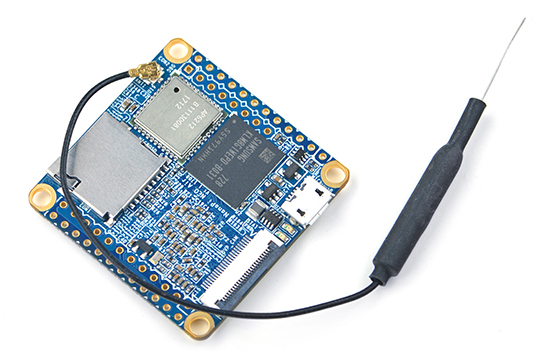
Open the file "/etc/wpa_supplicant/wpa_supplicant.conf" with vi or gedit and append the following lines:
network={ ssid="YourWiFiESSID" psk="YourWiFiPassword" }
The "YourWiFiESSID" and "YourWiFiPassword" need to be replaced with your actual ESSID and password.
Save, exit and run the following commands your board will be connected to your specified WiFi:
ifdown wlan0 ifup wlan0
If your WiFi password has special characters or you don't want your password saved as plain text you can use "wpa_passphrase" to generate a psk for your WiFi password. Here is how you can do it:
wpa_passphrase YourWiFiESSID
Following the prompt type in your password. If you open the file "/etc/wpa_supplicant/wpa_supplicant.conf" you will find that your password has been updated and you can delete your clear-text password.
5.4 Login via SSH
The NanoPi NEO Air doesn't have a video output interface. You can log into the board via SSH. In our test the IP address detected by our router was 192.168.1.230 and we ran the following command to log into the NanoPi NEO Air:
ssh root@192.168.1.230
The password is fa
5.5 Check CPU's Working Temperature
Type the following command on a terminal to read H3's temperature and frequency:
cpu_freq
5.6 Check System Information with Rpi-Monitor
Our Ubuntu-Core contains the Rpi-Monitor utility with which users can check system information and status.
In our case our NEO Air's IP was 192.168.1.230 and we typed the following IP in a browser:
192.168.1.230:8888We entered the following page:
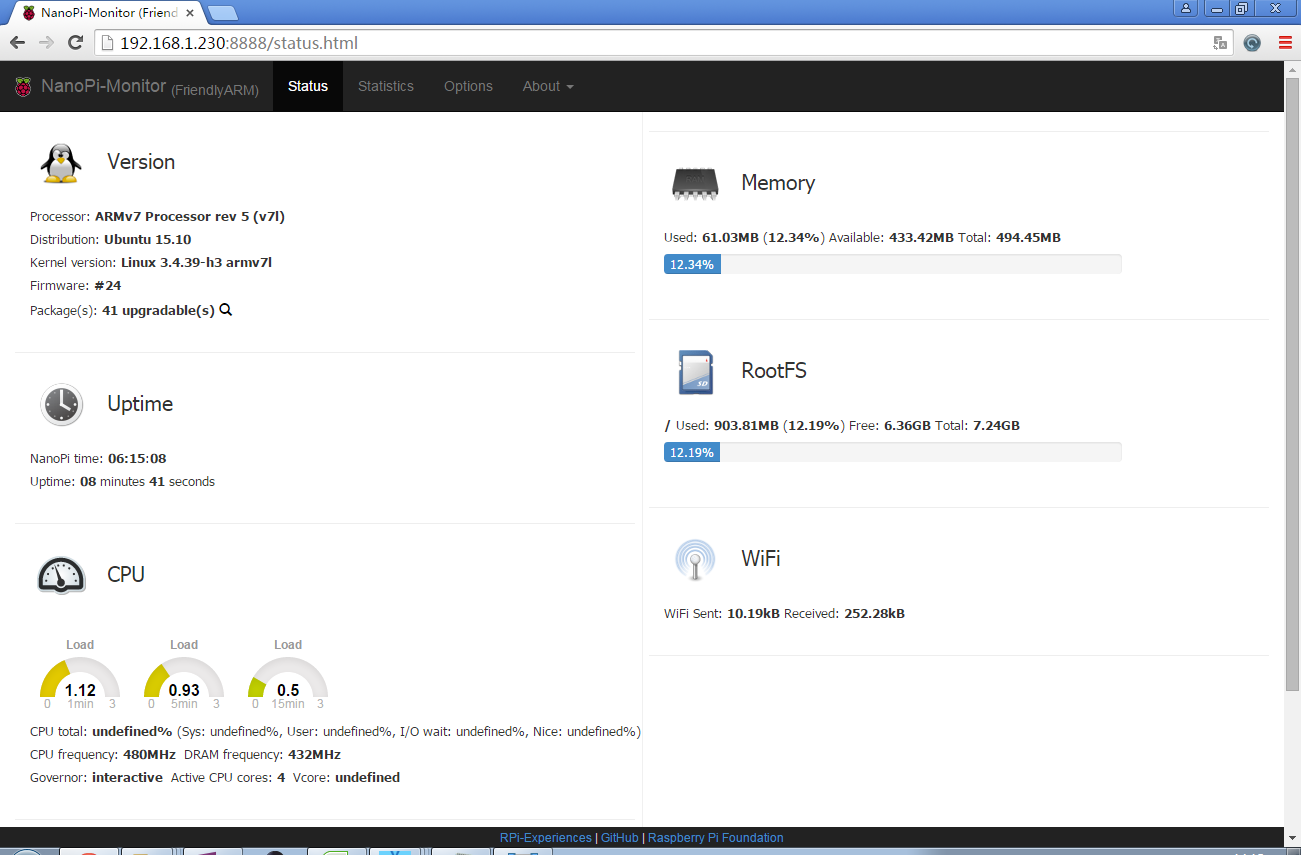
Users can easily check these system information and status.
5.7 Connect NanoPi NEO AIR to DVP Camera(CAM500B)
The CAM500B camera module is a 5M-pixel camera with DVP interface. For more tech details about it you can refer to Matrix - CAM500B.
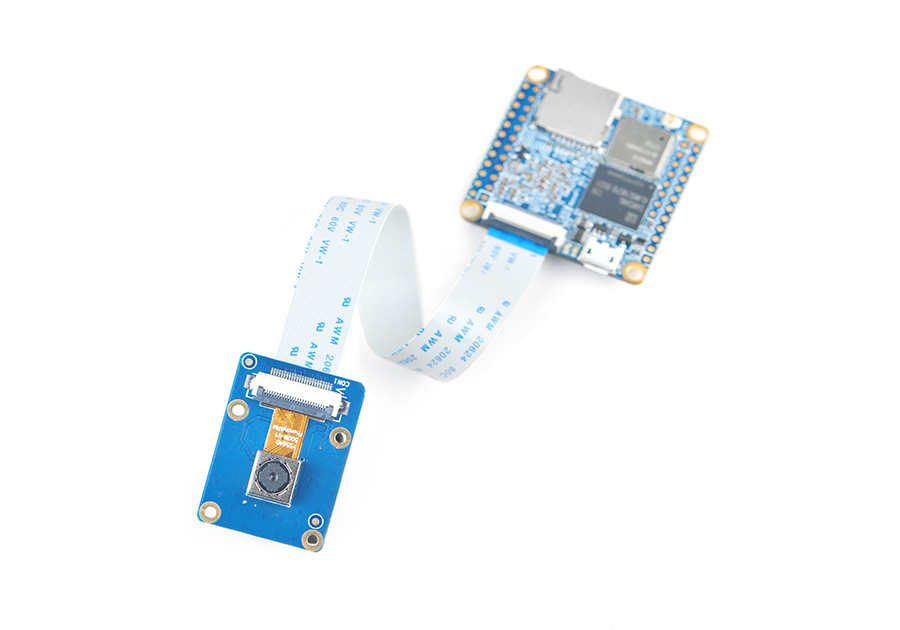
Boot your NanoPi NEO AIR, connect your NEO AIR to a network, log into the board as root and run "mjpg-streamer":
cd /root/mjpg-streamer make ./start.sh
The mjpg-streamer application is an open source video steam server. After it is successfully started the following messages will be popped up:
i: Using V4L2 device.: /dev/video0 i: Desired Resolution: 1280 x 720 i: Frames Per Second.: 30 i: Format............: YUV i: JPEG Quality......: 90 o: www-folder-path...: ./www/ o: HTTP TCP port.....: 8080 o: username:password.: disabled o: commands..........: enabled
In our case the NEO AIR's IP address was 192.168.1.230. We typed 192.168.1.230:8080 in a browser and were able to view the images taken from the camera's. Here is what you would expect to observe:
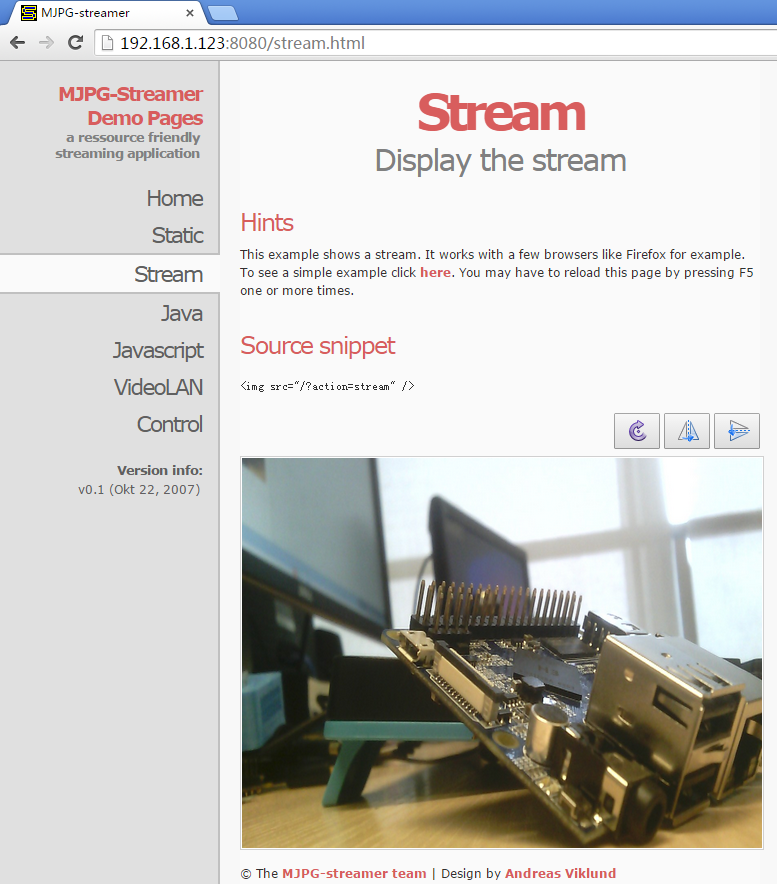
The mjpg-streamer soft-encodes data with libjpeg and you can hard-encode its data with ffmpeg which will greatly increase CPU's efficiency and speed up data encoding:
ffmpeg -t 30 -f v4l2 -channel 0 -video_size 1280x720 -i /dev/video0 -pix_fmt nv12 -r 30 -b:v 64k -c:v cedrus264 test.mp4
By default it records a 30-second video. Typing "q" stops video recording. After recording is stopped a test.mp4 file will be generated.
5.8 Bluetooth
Install Bluetooth packages:
apt-get install bluetooth bluez obexftp openobex-apps python-gobject ussp-push time bc
In our test case we used a Samsung Galaxy A7 Android phone. Connect a wireless antenna to your Air and type the following command to search a surrounding Bluetooth device:
hcitool scan
Our Samsung Samsung Galaxy A7 was detected and its MAC address was "50:C8:E5:A7:31:D2". We had a "test.jpg" file on our NEO Air and we sent it to A7 by running the following command:
bt_send_file.sh -a 50:C8:E5:A7:31:D2 -f test.jpg
On the phone a popup window would show up. After we clicked to accept this file transfer would start. After this transfer was done we got the following messages:
name=test.jpg, size=2215936 Local device A1:A3:C1:79:66:6E Remote device 50:C8:E5:A7:31:D2 (12) Connection established send 2164K finish, speed=5.6 K/s
We found this file on the phone and the file transfer was successful.
6 Make Your Own Ubuntu-Core with Qt-Embedded
6.1 Preparations
Visit this link download link and enter the "sources/nanopi-H3-bsp" directory and download all the source code.Use the 7-zip utility to extract it and a lihee directory and an Android directory will be generated.You can check that by running the following command:
ls ./ android lichee
Or you can get it from our github:
git clone https://github.com/friendlyarm/h3_lichee.git lichee
Note: "lichee" is the project name named by Allwinner for its CPU's source code which contains the source code of U-boot, Linux kernel and various scripts.
6.2 Install Cross Compiler
Visit this site download link, enter the "toolchain" directory, download the cross compiler "gcc-linaro-arm.tar.xz" and copy it to the "lichee/brandy/toochain/" directory.
6.3 Compile lichee Source Code
Compilation of the H3's BSP source code must be done under a PC running a 64-bit Linux.The following cases were tested on Ubuntu-14.04 LTS-64bit:
sudo apt-get install gawk git gnupg flex bison gperf build-essential \ zip curl libc6-dev libncurses5-dev:i386 x11proto-core-dev \ libx11-dev:i386 libreadline6-dev:i386 libgl1-mesa-glx:i386 \ libgl1-mesa-dev g++-multilib mingw32 tofrodos \ python-markdown libxml2-utils xsltproc zlib1g-dev:i386 u-boot-tools
Enter the lichee directory and un the following command to compile the whole package:
cd lichee ./build.sh -p sun8iw7p1 -b nanopi-h3
After this compilation succeeds a u-boot, Linux kernel and kernel modules will be generated.
Note: the lichee directory contains a cross-compiler we have setup. When the build.sh script runs it will automatically call this cross-compiler.
6.4 Package System Modules
./gen_script.sh -b nanopi-neo
The gen_script.sh script patches the U-boot with Allwinner features and copies the generated executables including u-boot and Linux kernel and configuration files to the "lichee/tools/pack/out/" directory and generates a script.bin file.
Type the following command to update the U-boot on the MicroSD card:
./fuse_uboot.sh /dev/sdx
Note: you need to replace "/dev/sdx" with the device name in your system.
The boot.img and kernel modules are under the "linux-3.4/output" directory. You can copy the new boot.img file to your MicroSD card's boot section.
6.5 Compile U-boot
You can compile u-boot individually by using the following command:
./build.sh -p sun8iw7p1 -b nanopi-h3 -m uboot ./gen_script.sh -b nanopi-neo
The gen_script.sh script patches the U-boot with Allwinner features. A U-boot without these features cannot work.
Type the following command to update the U-boot on the MicroSD card:
./fuse_uboot.sh /dev/sdx
Note: you need to replace "/dev/sdx" with the device name in your system.
6.6 Compile Linux Kernel
If you want to compile the Linux kernel run the following command:
./build.sh -p sun8iw7p1 -b nanopi-h3 -m kernel
After the compilation is done a uImage and its kernel modules will be generated under "linux-3.4/output".
6.7 Clean Source Code
./build.sh -p sun8iw7p1_linux -b nanopi-h3 -m clean
7 3D Printing Files
NanoPi NEO-AIR 3D printed housing
3D Printing Files
8 Other OS Support
8.1 DietPi_NanoPiNEO-armv7-(Jessie)
DietPi is an extremely lightweight Debian Jessie OS. Its image file starts at 400MB and nearly 3x lighter than 'Raspbian Lite'.It is pre-installed with DietPi-RAMLog. These features enable users to get the best performance of a device.
The following steps are for reference only. FriendlyElec doesn't provide technical support for them.
Installation guide:
- Download the image file "DietPi_NanoPiNEO-armv7-(Jessie)" from DietPi_NanoPiNEO-armv7-(Jessie)
- Extract the package and use the win32diskimager to write it to a MicroSD card under Windows.
- Insert this MicroSD card to your NanoPi NEO and power up.
Username:root , Password: dietpi
9 Resources
- Schematics
- Dimensional Diagram
- H3 datasheet Allwinner_H3_Datasheet_V1.2.pdf
The following BakeBit modules can work with BakeBit - NanoHat Hub:
- 1.Button
- 2.Buzzer
- 3.Green LED
- 4.JoyStick
- 5.LED Bar
- 6.Light Sensor
- 7.OLED
- 8.Red LED
- 9.Rotary Angle Sensor
- 10.Servo
- 11.Sound Sendor
- 12.Ultrasonic Ranger
- Matrix Modules & Wiki Sites:
- Button
- LED
- A/D Converter
- Relay
- 3-Axis Digital Accelerometer
- 3-Axis Digital Compass
- Temperature Sensor
- Temperature & Humidity Sensor
- Buzzer
- Joystick
- I2C(PCF8574)+LCD1602
- Sound Sensor
- Ultrasonic Ranger
- GPS
- Matrix - Compact Kit
- Fire Sensor
- CAM500A Camera
- BAll Rolling Switch
- 2'8 SPI Key TFT 2.8" SPI LCD
- IR Counter
- IR Receiver
- L298N Motor Driver
- MQ-2 Gas Sensor
- MQ-3 Gas Sensor
- One_Touch_Sensor
- _Photoresistor
- _Potentiometer
- Pressure & Temperature Sensor
- RGB LED
- RTC
- Rotary Encoder
- Soil Moisture Sensor
- Thermistor
- USB WiFi
- Water Sensor
10 Update Log
10.1 Sep-28-2016
- Released English Version
10.2 Nov-03-2016
- Updated Sections 1, 3.1 and 6.2
10.3 Dec-13-2016
- Updated Section 6.2
- Added Section 6.4
10.4 Jan-10-2016
- Updated Section 5.2
10.5 Feb-5-2016
- Updated Sections 6 and 9
- Added sections 5.3 and 5.4
